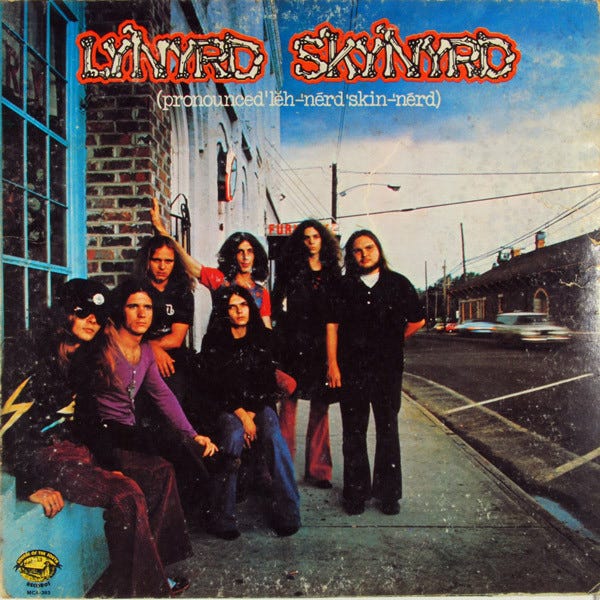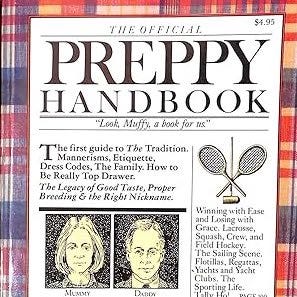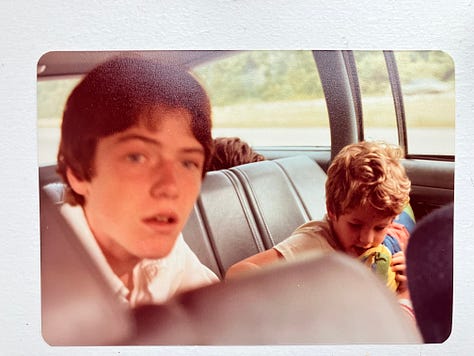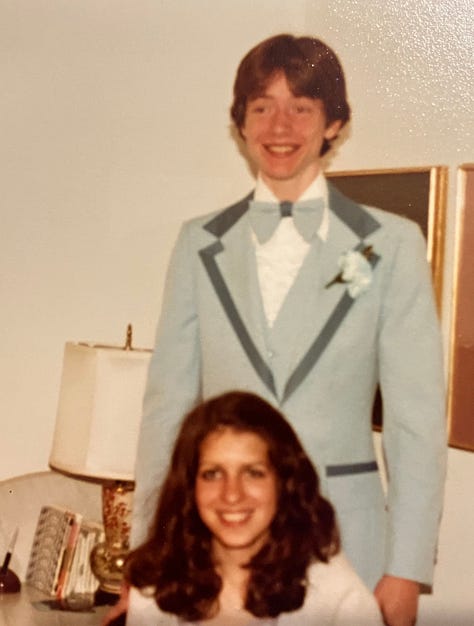The Second Time
Part 4 of Welcome to Charlottesville, a weekly visit to a town, a failed art project, and the future of America.
Welcome Back to Charlottesville
(Links to part 1, part 2, part 3 if you want to read in order.)
The second time I moved to Charlottesville, I was thirteen. There were four of us now: Mom, older brother Bret, me, and newish 4-year-old little brother Ben.
Ben was mom’s son by John Jones. He’d married her in 1969 and taken all of us to his hometown of Laurens, South Carolina, where he taught high school English. John Jones was a wonderful man, funny, kind, thoughtful—a dream father really—all the more so to me because he chose to be my dad. He became our legal guardian and we all changed our surnames to Jones. Some of my favorite times in life were walking my dog with my dad around the neighborhood just talking. He had a great gift for listening and understanding.
One morning in March about six months after Ben was born there was a thunderstorm. My dad hurried out with his briefcase and black umbrella so as not to be late for work. Lightning stuck a nearby tree and passed through the car at the moment he touched the handle. He was dead by the time he reached the hospital.
We stayed in Laurens for several more years, but my mom was not happy as a widow there. Charlottesville had been a refuge the first time she lost a husband. She had family here, there was summer theater, and it was near Washington, DC. Plus Ben was almost old enough for kindergarten and there weren’t many options in Laurens. I didn’t want to go and argued bitterly.
But in the summer of 1978 with Social Security money from my dad’s death plus money from selling the Laurens house my mom bought us a white pre-fab house on Trailridge Road in Johnson Village and that fall I started as a freshman at Charlottesville High School.
I hated it.
Charlottesville High School
In 1978 moving to an American town at the beginning of high school was just moving to a high school. The town played little part in the thing. Life would revolve around Charlottesville High School: The school bus to and from CHS, classes all day in CHS, activities after school at CHS, finally homework to go back to CHS the next day—homework that I usually didn’t finish.
I don’t like bashing schools. Building massive universal public education systems is really difficult, and American schools do a lot of things well. American elementary schools, for example, are very good at teaching almost everyone to read. But there’s no getting around that American high schools are weird. Most cultures go out of their way to keep teenagers separated from one another to socialize and integrate them into adult life. In America we pack our teenagers together in a separate world to spend years ricochetting off one another. It’s a parallel universe serviced by its own transportation fleet, it’s own food, it’s own entertainment, it’s own culture. European high schools are usually in central locations with the kids’ schedules staggered so different kids arrive and depart at different times and different days. All this lets them save a lot of money by using the same public transporation for both the kids and the general public. We keep an entire fleet of buses that are used for nothing but taking kids to school. Most high schools in the world have vocational or career direction built in. And so on. The point is, I probably wouldn’t have liked any American high school, including Laurens—too many kids, no real freedom, no real goals other than eventually leaving, and being on display at an awkward age—but CHS for me in 1978 was especially hard.
For starters, the culture shock. I came from the land of hand-me-down Keep On Truckin’ shirts and bell-bottom jeans; I found myself in one of the preppiest places in America. I actually like preppy culture, but it’s not easy to understand as a newbie.*


Worse than that, CHS merged kids from two different middle schools, Buford and Walker, so Buford kids figured I must be Walker but they saw I had no Walker friends; Walker kids figured I must be Buford but they saw I had no Buford friends. Nothing is more self-perpetuating than a high school freshman with no friends, and I had no idea how to make friends since I’d come from a place where we all knew each other.
Worst of all, in trying to meet people I started to see myself through their eyes. I discovered to my horror that I was small, skinny, pale, socially awkward, and ignorant. I’d never noticed this. (Truthfully, I did notice pale. Annual sunburns brought that to my attention.) I had actually liked myself, and that embarrassed me now too; how had I not seen myself more clearly?
I didn’t blame Charlottesville. They hadn’t asked me to move here. It wasn’t their fault that I was small, skinny, pale, socially awkward, and ignorant. And I never blamed Bret or Ben for moving, or my mom for wanting to move. She even tried to placate me by giving me the better room since Bret had had the better room in Laurens and picking a church that might remind us of the church in Laurens. But I was furious with my mom for putting me in this trap where if I complained I was a whiner, and if I didn’t everything must be fine. Moving meant I had already lost my dad’s family, the sites of his memories, and the community where I felt accepted, but also in a sense I felt I’d lost Bret, Ben, and mom too. Because what was best for them wasn’t best for me. Which meant we weren’t a unit. I couldn’t trust them. So I was alone.
So now I just had to tough it out for four years, stay busy, stay interested in things that interested me, but share as little of myself as possible, keep the walls up, until I had a better plan and better human skills. And that’s what I did.
On the outside it worked okay. I had a best friend, James, who lived two houses up the block and we hung out more days than not. I made friends in theater and band. Bret got me into role-playing games where I made other friends. I had silly crushes, awkward dates, and sweet girlfriends. I loved the girlfriends as much as I could being a person who couldn’t really tell the truth. After spending my junior year mostly sleeping, I even grew. I turned out tall which was a pleasant surprise. By then I was also less socially-awkward and ignorant, though I remained skinny for decades, and pale to this day. I had some great teachers, Mrs Bryant, Mrs Landess, Mr Savage, and Mrs Martin among them. I was shocked to find that I was good at acting and writing, and I was always funny and creative.



Out on The Town
On the rare occasions when my awareness extended beyond CHS and/or our Johnson Village basement, it was usually to order Scillian Square pizzas from Anna’s Pizza #5. Or for our family to eat at Hardees. (The french fry forks were long gone but I liked the roast beef sandwiches. ) We couldn’t afford more than one family car so Bret and I rode the bus through senior year, but on weekends and summer days James and I or Bret and I would cut down through the woods, cross Cherry Avenue, and cross the railroad tracks on Valley Road to reach Cabell Hall, where some geeky activity would be going on. Aunt Clarice moved to Orangedale and we could also walk there from Johnson Village over a foot bridge. It reminded me of visiting her back in the Hessian Hills.
My first date date—once I got my driver’s license and borrowed the family station wagon—was a dinner at Schnitzelhouse. Dates and parties often meant someone’s house in Greenbriar. We went to church at Grace Espiscopal in Keswick.
For Christmas we’d venture to Fashion Square, Barracks Road, and at the new downtown mall—which came to Charlottesville just two years before we did. The Omni wasn’t yet built, and of course Vinegar Hill would be barren for many more years. At the time the mall and downtown were still envisioned as places shoppers would come to, park, shop, and leave again.
By the end of high school I turned out to be a good student. My study habits hadn’t improved; it’s just 11th and 12th grade classes had more reading than writing, and less daily homework. My PSAT and SAT scores and grades weren’t good enough for one of the elite colleges (where you, Friend Reader, probably went!), but I happily applied to College of Charleston in South Carolina, a small college in a beautiful city—a real city—in the state where I felt least out of place. (Even though Charleston is the opposite end of the state from Laurens.) I was accepted and even offered a scholarship.
Wherever You Go, You’re Someplace Different
I pulled out my yearbooks a couple days ago to look for photos for this post, and reading through I was struck by how many people were nice to me. Really such sweet, kind, generous people I knew at CHS. I’d been mostly too self-conscious to be more than vaguely aware and grateful back then—secretly grateful because I didn’t want to jinx it. We did have a lot of fun, but I always felt a little outside the fun I was having. By my senior year I appreciated the culture shock of moving here. It gave me some privileged insight into humanity. I was definitely not grateful for having moved at the point when I was small, skinny, pale, socially awkward, and ignorant, but I survived. The sense of being alone was more damaging and more haunting and hardened into my character.
We say things like Don’t worry about what other people think; it’s what you think that matters. Or Wherever you go, you take yourself with you. I said some version of this to my 12-year-old daughter just the other day, hoping to strengthen her to overcome obstacles.
But Welcome to Charlottesville is a story about towns and cities, and change and deep time, and on that scale where we live and how it is organized has a profound impact on what people think about us, and what people think about us has profound consequences for every aspect of our lives. When I eventually moved back to Charlottesville, I got to see amazing things.
But in 1982 I left to go to college certain I would never live here again.
This has been Part 4 of Welcome to Charlottesville. The series appears on Tuesdays. Part 5: Police Stories: The Launch should come out 8/6. Meanwhile I’ll hopefully have a piece called “Constellations and the Python” coming out Thursday or Friday. It might even touch on why so many American high schools were built in the middle of nowhere.
*My twelve-year old daughter has amused me this year by describing a new culture hip among the tweens that calls itself ‘preppy’, but it’s pretty different, involving apparently among other things beauty products. It seems like a hybrid of preppy and Valley Girl.
**Photograph by local institution, Ed Roseberry, who was known especially for his wonderful pics of musicians who came through town. They have some of his photos on the walls of The Nook. He died in 2022. Here’s an obituary in the Daily Progress if you can read it past the pop-up whack-a-mole ads.





